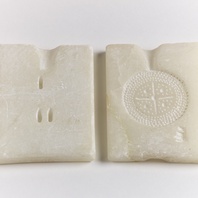
Viking Objects
Reproduction Soapstone Mould
A soapstone (steatite) mould for casting jewellery. This reproduction is double-sided so that it can be used to cast the main brooch or two disc brooches simply by reversing the mould. It is based on known examples of soapstone moulds but the main mould has been created to reproduce the Barker Gate brooch from Nottingham. Soapstone or steatite was widely used in Scandinavia and the Viking diaspora, as it is soft and easily carved, in particular for cooking vessels in cultures that did not produce ceramics. There are soapstone quarries in Norway, Shetland and Greenland. Soapstone objects found elsewhere generally suggest a Viking link to one of these places, though smaller ones are often repurposed from what were originally larger vessels.
Read More
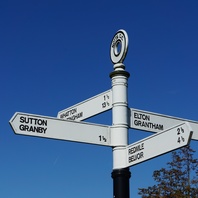
Viking Names
Granby
Granby, in the Bingham Wapentake of Nottinghamshire, comes from the Old Norse male personal name Gráni and the Old Norse element by ‘farmstead, village’. It is of interest that a document from c. 1200 records that there was a Granehou nearby and it is possible that this was the burial-mound (Old Norse haugr) of the same Gráni who gave his name to the village. Unfortunately, no such mound can be identified today.
Read More
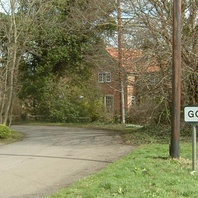
Viking Names
Gonalston
Gonalston, in the Thurgarton Wapentake of Nottinghamshire, comes from the Old Norse male personal name Gunnolfr and the Old English tun ‘farm, settlement’. It is thus a hybrid name, like Toton.
Read More

Viking Names
Maplebeck
Maplebeck, in the Thurgarton Wapentake of Nottinghamshire, is an Anglo-Scandinavian compound formed from Old English mapel ‘a maple tree’ and Old Norse bekkr ‘a stream, a beck’
Read More
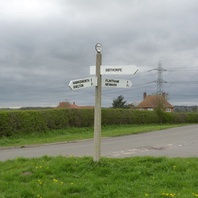
Viking Names
Sibthorpe
Sibthorpe, in the Newark Wapentake of Nottinghamshire, comes from either the Old English male personal name Sibba or the Old Norse male personal name Sibbi and Old Norse þorp ‘a secondary settlement, a dependent outlying farmstead or hamlet’.
Read More
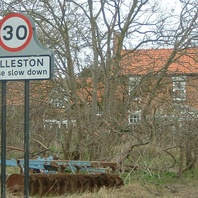
Viking Names
Rolleston
Rolleston, in the Thurgarton Wapentake of Nottinghamshire, comes from the Old Norse male personal name Hróaldr and the Old English element tun ‘farm, settlement’. It is thus a hybrid name like others nearby, such as Gonalston.
Read More
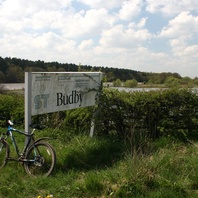
Viking Names
Budby
Budby, in the Bassetlaw Wapentake of Nottinghamshire, likely comes from the Old Norse male personal name Butti (or possibly Botti)and the Old Norse element bý ‘farm, settlement’. Budby is a joint parish with Perlethorpe.
Read More
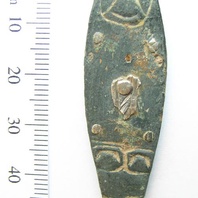
Viking Objects
Zoomorphic Strap-End (SWYOR-B89D43)
This Thomas Type A strap-end is decorated with zoomorphic designs and what seems to be a face which may fall into the Trewhiddle style. There is some trace evidence of silver plating. Strap-ends came in various styles and were fairly common throughout the Viking world. They were used to decorate the ends of belts and to stop them getting damaged.
Read More
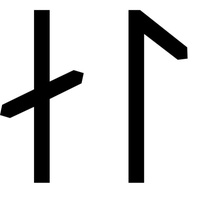
Viking Names
Val
Valr is an original byname meaning ‘hawk, falcon’. Valr is recorded as a male personal name and byname in West Scandinavia and is found in a Swedish runic inscription. Valr is the first element in the place-name Walesby, Nottinghamshire, and a place of the same name in Lincolnshire. Walshcroft Wapentake in Lincolnshire also contains either this name or the Old Norse male name Váli and Old Norse kross, the cross probably marking the location of the Viking Age meeting-place. Cameron suggests that the same man gave his name to Walesby and the wapentake.
Read More
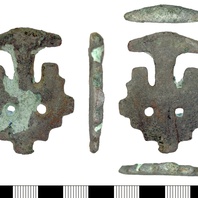
Viking Objects
Copper-Alloy Die Stamp (DENO-698D71)
A copper-alloy die, known as Hiddensee-Rügen type, used for making pressed silver or gold sheet appliqués, which were applied to the back-plate of pendants or used as a base for filigree and granulation work.
Read More
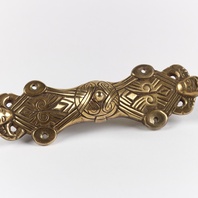
Viking Objects
Reproduction Equal-Armed Brooch
A reproduction of an equal-armed brooch in the Borre style found in Nottinghamshire. This style of brooch is known from Birka in Sweden, suggesting trade contacts or individuals from Birka arriving in the East Midlands. Brooches were a typical part of female dress. Scandinavian brooches came in a variety of sizes and shapes which included disc, trefoil, lozenge, equal-armed, and oval shapes. The different brooch types served a variety of functions in Scandinavian female dress with oval brooches typically being used as shoulder clasps for apron-type dresses and the rest being used to secure an outer garment to an inner shift. Anglo-Saxon brooches do not match this diversity of form with large disc brooches being typical of ninth century dress styles with smaller ones becoming more popular in the later ninth and tenth centuries. However, since disc brooches were used by both Anglo-Saxon and Scandinavian women they are distinguished by their morphology. Scandinavian brooches were typically domed with a hollow back while Anglo-Saxon brooches were usually flat. Moreover, Anglo-Saxon brooches were worn singly without accompanying accessories.
